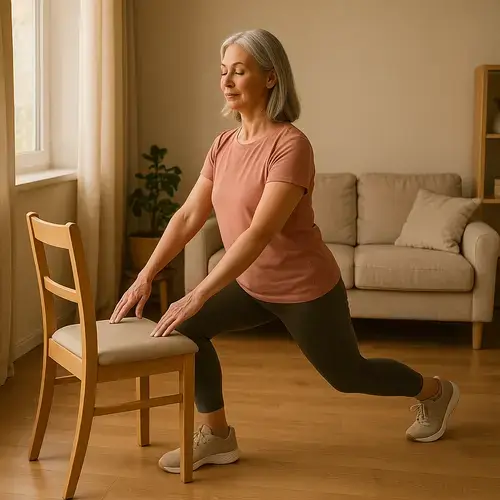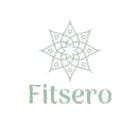What HIIT Really Is and How to Measure Intensity
HIIT workouts for women over 50 offer a powerful, time-efficient way to boost both energy and metabolism without spending hours or risking your joints. But how do you know you’re actually doing HIIT the right way?

Disclosure: This article contains affiliate links. We may earn a commission at no extra cost to you.
High-Intensity Interval Training (HIIT) delivers exceptional benefits for women over 50 when you execute it correctly, but there’s a lot of confusion about what true HIIT actually looks like. Real HIIT isn’t just any fast-paced workout—it’s repeated, short bursts of very high effort, typically hitting 80–95% of your maximum heart rate (HRmax) for just 20 to 45 seconds at a time. After each intense push, you’ll need a full or partial recovery period that’s at least as long as your work interval, giving your body a chance to recuperate before the next round. Here’s the reality check: if you’re not genuinely breathless during those intervals, you’re not working at true high intensity.
You’ve probably seen countless routines marketed as “HIIT” that are really just moderate circuit training in disguise. While those workouts have their place, they won’t deliver the signature effects of authentic HIIT—like that elevated post-exercise calorie burn (what exercise scientists call excess post-exercise oxygen consumption, or EPOC). This metabolic boost matters especially as your metabolism naturally slows with age, making genuine HIIT a powerful tool in your fitness arsenal.
How to Measure Your Intensity—Three Proven At-Home Tools
Maximum Heart Rate Estimation: Start with the straightforward formula of 220 minus your age to approximate your HRmax. Let’s say you’re 55—that gives you an estimated maximum of about 165 beats per minute. During your HIIT intervals, you’ll want to hit 80–95% of that number (roughly 132–157 bpm). Affordable wrist heart rate monitors or smartphone pulse apps work well for tracking, though it’s smart to verify their accuracy occasionally by manually counting your pulse at your wrist or neck—just count for 15 seconds and multiply by four.

Rate of Perceived Exertion (RPE): Think of this as your internal intensity meter. On a scale from 1 (resting comfortably) to 10 (absolute max effort), your HIIT intervals should feel like an 8 or 9—very hard, almost impossible to speak. During recovery phases, you should drop down to around a 3 or 4, where easy conversation feels natural again.
The Talk Test: This one’s simple but effective. If you can only gasp out a word or two during your work intervals, you’re likely hitting true high-intensity levels. If you can comfortably hold a conversation, you’ll need to push yourself a bit harder.
Printable heart rate charts from cardiovascular organizations make handy references you can keep nearby during workouts. When you’re just starting with HIIT, check your heart rate every few minutes until you develop a feel for consistently hitting the right zones. And because health conditions and medications can significantly affect how your heart responds to exercise, always consult your physician before diving into HIIT—especially if you have any cardiovascular, respiratory, or musculoskeletal concerns. Never push through warning signs like dizziness, chest pain, or unusual breathlessness.
If you’re looking for science-backed, joint-friendly HIIT routines that fit into even the busiest schedule, the 7-Minute Ageless Body Secret is specifically designed for women over 50—delivering effective results in just seven minutes a day, right in the comfort of your own home.
You’ll find more quick and effective home routines suitable for any fitness level in our guide to quick and easy exercises that deliver results.
Ready to boost your metabolism and confidence with a straightforward, no-nonsense HIIT approach? The 7-Minute Ageless Body Secret meets your body exactly where it is for effective, sustainable results.
Safety, Pre-Exercise Screening, and Clear Contraindications
Starting HIIT after 50 can be genuinely empowering—but your safety comes first. A quick self-check before you begin helps you avoid setbacks and keeps your confidence riding high.
HIIT can be both safe and empowering for women over 50, provided you conduct thorough pre-exercise self-screening. This checklist, adapted from the trusted PAR-Q questionnaire, helps identify potential risks before you start pushing your limits:
- Known heart conditions: You’ll need medical clearance before starting any HIIT program.
- Unexplained chest pain during activity: Stop immediately and seek professional evaluation.
- Recent fainting or severe dizziness: Get a medical assessment before beginning any exercise routine.
- Uncontrolled high blood pressure (typically above 160/100 mmHg): Work with your doctor to stabilize your blood pressure before beginning HIIT Source: American Heart Association.
- Significant joint pain, severe arthritis, or osteoporosis with fracture risk: Low-impact exercises are your better bet—consult a physical therapist for guidance first.
- Diagnosed lung disease, complicated diabetes, or kidney disease: These conditions require tailored professional advice before starting intense exercise.
- Current injuries or recent surgery: Hold off on intense workouts until you’ve been medically cleared.
If you haven’t exercised regularly for years, take medication for your heart, blood pressure, or diabetes, or you’ve noticed worsening symptoms during everyday activities, have a conversation with your healthcare provider before progressing with HIIT.
If you experience severe chest pain, loss of consciousness, worsening shortness of breath, or rapid swelling during or after HIIT, stop immediately and seek emergency care.
Common Contraindications: When HIIT Isn’t Safe Without Medical Clearance
- Unstable cardiovascular disease or recent cardiac events (heart attack, unstable angina, recent stents or surgery)
- Uncontrolled arrhythmias or severe valve disease
- Severe uncontrolled metabolic crises (such as thyroid storm or ketoacidosis) or kidney failure
- Severe respiratory conditions that limit safe exertion
- Current infections or fevers
Professional guidance is absolutely necessary in these situations—self-directed HIIT simply isn’t recommended Source: CDC PAR-Q Form.
Adapting HIIT if You Have Joint or Heart Concerns
- Swap out jumps and sprints for brisk marching, step-touch movements, or chair-based exercises
- Keep your work intervals shorter initially (10–20 seconds) with longer rest periods
- Monitor your perceived effort, aiming to speak in brief phrases rather than gasping for air
- Start with just 1–2 rounds and build gradually as your tolerance improves
Low-impact HIIT options and functional exercises can deliver impressive cardiovascular benefits while protecting your joints from unnecessary stress. For more guidance, check out our guide to low-impact HIIT.
Key Questions to Discuss With Your Healthcare Provider
- “Do I have any heart, bone, or joint conditions that require specific HIIT modifications or complete avoidance?”
- “Are my blood pressure and blood sugar levels stable enough for moderate-to-high intensity exercise?”
- “What’s the safest way for me to start HIIT, or can you refer me to a specialist who can help?”
Clear, honest communication with your provider ensures your safety and builds the confidence you need to progress steadily and successfully.
For safe, effective, and joint-conscious HIIT routines specifically designed for women over 50, the 7-Minute Ageless Body Secret offers guided daily videos with modifications that prioritize both safety and progressive results.
Thank you for reading my article about hiit workouts for women over 50

